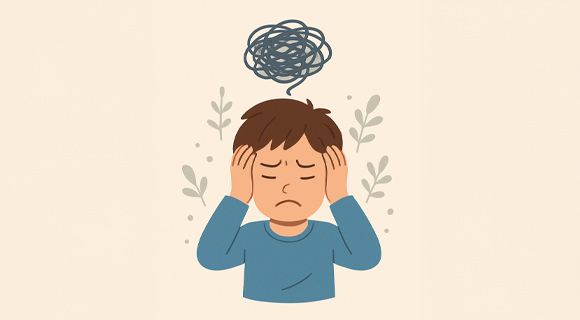
-
Learn the ways Cognitive Behavioral Therapy techniques, like thought records or behavior tests, can help reduce anxiety.
-
Provide simple CBT exercises for families to practice at home.
Based on the US Centers for Disease Control and Prevention (2024), one in 10 children suffers from an anxiety diagnosis, with the age at which it manifests between 3 and 17 years. Cognitive Behavioral Therapy (CBT) is a form of talk therapy developed to help people recognize harmful thoughts and comprehend the impact of these thoughts on their actions and behavior (Halder and Mahato, 2019).
How do these concepts relate, and what do you need to offer your dependent or child?
Children's anxiety can manifest itself as excessive anxiety or panic attacks, avoiding demanding tasks, difficulty being in a dark space, fear of darkness, and many more. These signs can lead to an "avoidant reinforcement cycle," in which a child is unable to deal with circumstances or events that cause anxiety or discomfort. While this can be temporary, it is not addressing the root of the issue or anxiety (The McGraw Center for Teaching and Learning, 2021).
How to Break the Cycle:
When your child struggles with anxiety or negative thinking, breaking the cycle can feel difficult but it’s absolutely possible with Cognitive Behavioral Therapy (CBT) techniques. CBT helps children learn how to identify patterns, challenge unhelpful thoughts, and build confidence through small, steady steps. Here’s how you can start supporting them from home:
1. Exposure and Tolerance: Gradually expose your child to situations that cause anxiety.
2. Mindfulness Techniques: Learn to be conscious of physical sensations as well as emotional triggers.
3. Challenge Negative Thoughts: Let your child question and change the negative thoughts they have.
4. Coping Mechanisms: Develop strategies to lessen anxiety symptoms.
As a guardian, your responsibility as a guardian is to patiently assist your child's ability to recognize their anxieties and also be grateful for small successes as they progress.
CBT Exercises to Try at Home:
These simple at-home activities support Cognitive Behavioral Therapy goals by helping kids express feelings, process thoughts, and practice self-regulation in a hands-on way:
-
Drawing or Journaling: Encourage your child to communicate their thoughts, emotions, and concerns by writing or drawing.
-
Relaxation Techniques: Use breathing exercises, such as smelling a flower or blowing out candles.
-
Curiosity and questioning: Ask open-ended questions to combat negative thoughts and foster positive mindsets or growth. For instance, you could ask, "What emotions are you experiencing within yourself? What have you learned from this experience? What could we do to improve next time?"
-
Role Play: Develop strategies for coping with social situations to make your child be more prepared for the real world.
-
Mindfulness through thought Popping: Teach your children how to visualize negative thoughts as balloons or bubbles and pop them away before they linger in their mind.
By employing these strategies, you'll help your child better manage his/her anxiety.
Written by our Raise clinician: Jessica Trotter LAC




Comments